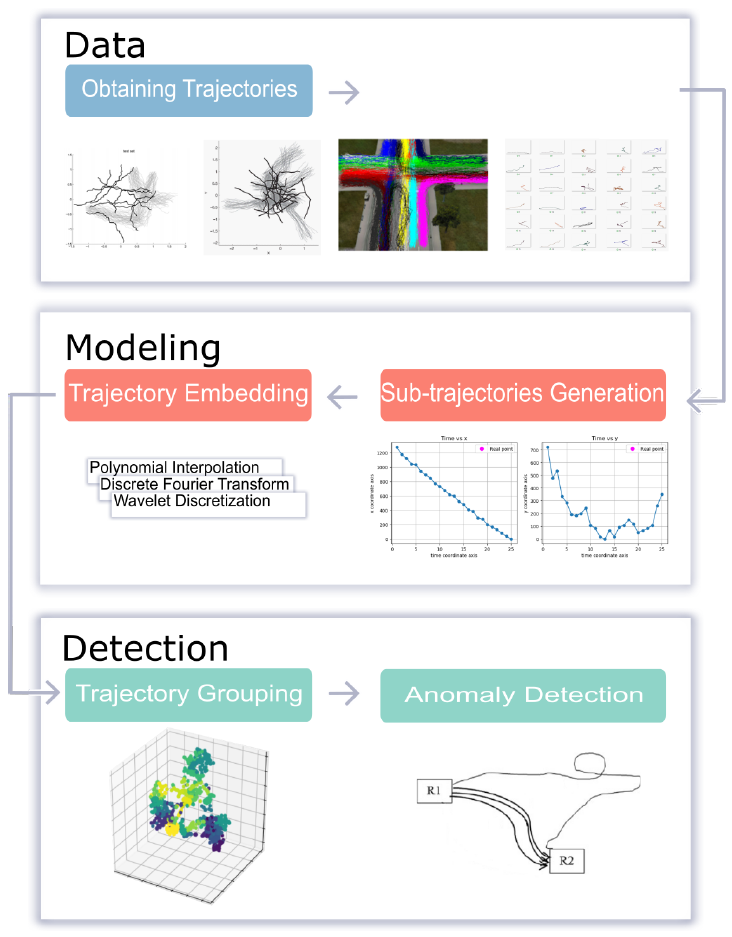Trajectory Anomaly Detection based on Similarity Analysis

Publication Details
- Venue
- Conferencia Latinoamericana de Informática
- Year
- 2021
- Publication Date
- October 29, 2021
Materials
Abstract
Automatic trajectory processing has multiple applications, mainly due to the wide availability of the data. Trajectory data have a significant practical value, making possible the modeling of various problems such as surveillance and tracking devices, detect anomaly trajectories, identifying illegal and adverse activity. In this study, we show a comparative analysis of the performance of two descriptors to detect anomaly trajectories. We define Wavelet and Fourier transforms as trajectory descriptors to generate characteristics and subsequently detect anomalies. The experiments emphasize performance in the description in the coefficient feature space. For that, we used unsupervised learning, specifically clustering techniques, to generate subsets and identify which are irregular. The implications of the study demonstrate that it is possible to use descriptors in trajectories for automatic anomaly detection and the use of unsupervised learning methods that automatically segment the required information. The performance and comparative analysis of our study are demonstrated through experiments and a case study considering synthetic and real data sets that leave evidence of our contribution.
Cite this publication (BIBTEX)
@article{2021-TrajectoryAnomaly,
title={Trajectory Anomaly Detection based on Similarity Analysis},
author={GF Quispe-Torres and Harley Vera-Olivera and Lauro Enciso-Rojas and Germain García-Zanabria},
journal={Conferencia Latinoamericana de Informática},
year={2021},
url={null},
date={2021-10-29},
volume={1},
issue={1}
} 